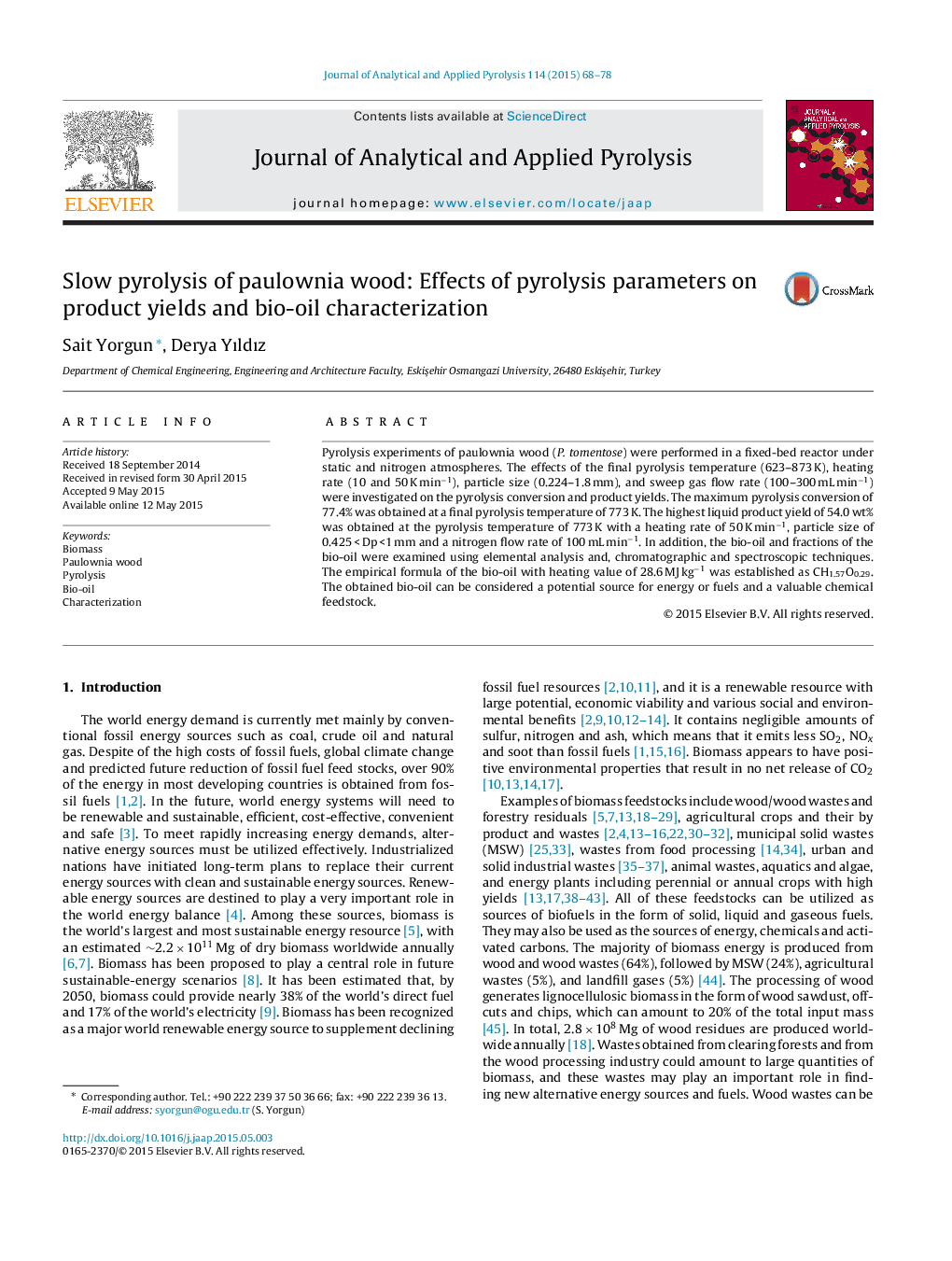| Article ID | Journal | Published Year | Pages | File Type |
|---|---|---|---|---|
| 1196966 | Journal of Analytical and Applied Pyrolysis | 2015 | 11 Pages |
•Slow pyrolysis of paulownia wood was performed in a fixed-bed reactor.•Effects of process variables on conversion and product yields were determined.•Bio-oil and its fractions were analyzed using various analysis techniques.
Pyrolysis experiments of paulownia wood (P. tomentose) were performed in a fixed-bed reactor under static and nitrogen atmospheres. The effects of the final pyrolysis temperature (623–873 K), heating rate (10 and 50 K min−1), particle size (0.224–1.8 mm), and sweep gas flow rate (100–300 mL min−1) were investigated on the pyrolysis conversion and product yields. The maximum pyrolysis conversion of 77.4% was obtained at a final pyrolysis temperature of 773 K. The highest liquid product yield of 54.0 wt% was obtained at the pyrolysis temperature of 773 K with a heating rate of 50 K min−1, particle size of 0.425 < Dp <1 mm and a nitrogen flow rate of 100 mL min−1. In addition, the bio-oil and fractions of the bio-oil were examined using elemental analysis and, chromatographic and spectroscopic techniques. The empirical formula of the bio-oil with heating value of 28.6 MJ kg−1 was established as CH1.57O0.29. The obtained bio-oil can be considered a potential source for energy or fuels and a valuable chemical feedstock.
